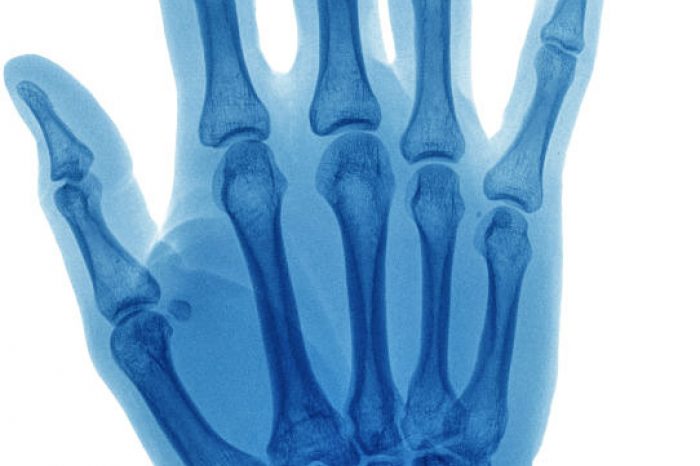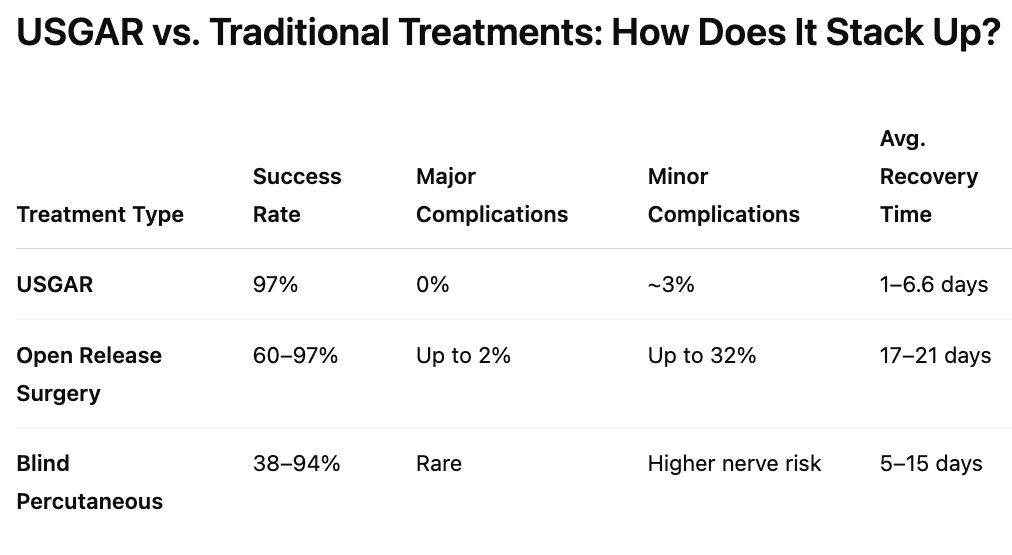

Trigger finger, also known as A1 pulley stenosing tenosynovitis, is a common hand disorder that can significantly impact daily activities. Traditional treatments include corticosteroid injections or surgical interventions, but in recent years ultrasound-guided A1 pulley release (USGAR) has emerged as a promising alternative to traditional open surgeries. This novel technique offers numerous benefits, including a quicker recovery and reduced risk of complications.
Trigger finger, known as A1 pulley stenosing tenosynovitis, is a common and painful condition that causes your finger or thumb to catch or lock. It happens when the A1 pulley, a fibrous band that helps guide tendons, becomes thickened or inflamed, disrupting smooth movement.
Treatment starts conservatively with splinting, rest, and steroid injections, but when these treatments fail, surgery is often required. Traditionally, that means open surgery or a “blind” percutaneous release. But ultrasound-guided A1 pulley release (USGAR) is a new minimally invasive procedure that uses real-time ultrasound imaging to precisely guide a needle or blade through the A1 pulley to release the constricted tendon.
A recent systematic review by Nakagawa et al. that was published in the Journal of Ultrasound Medicine analyzed 17 studies involving 749 procedures of ultrasound-guided A1 pulley release. The overall success rate for this method was found to be 97%, with very few complications reported. Minor complications such as hematomas, transient numbness, and persistent pain occurred in a small percentage of cases, but there were no major complications or permanent nerve damage observed.
Key Findings: The results? Impressive across the board.
Success rates in individual studies ranged from 76% to 100%.
Only 23 minor complications:
15 cases of persistent pain
4 hematomas
4 transient numbness (all resolved on their own)
Return to daily activities ranged from 1 to 6.6 days—far faster than traditional surgery.

Reference:
Nakagawa H, Redmond T, Colberg R, Latzka E, White MS, Bowers RL, Sussman WI. Ultrasound-Guided A1 Pulley Release: A Systematic Review. J Ultrasound Med. 2023 Nov;42(11):2491-2499.
Learn about ultrasound-guided A1 pulley release for trigger finger treatment, a minimally invasive procedure with a 97% success rate and fast recovery time. This technique is safer and more effective than traditional
Read MoreTrigger finger, also known as stenosing tenosynovitis, is a common hand condition that affects the tendons in your fingers or thumb. If you're dealing with pain, stiffness, or a locking sensation in your fingers, you
Read More